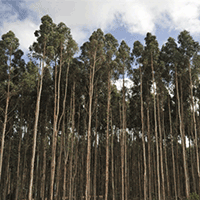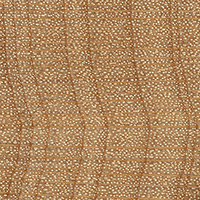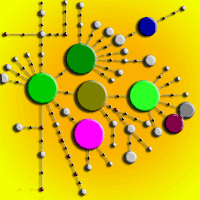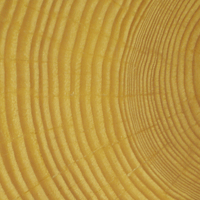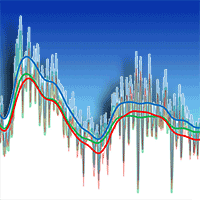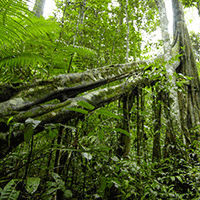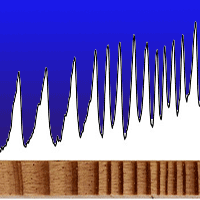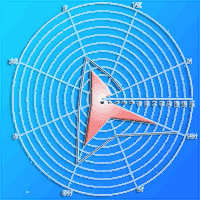
Anatomical and genetic aspects of ash dieback: a look at the wood structure
Mirela Tulik (1) , Jacek Zakrzewski (1), Jacek Adamczyk (2), Anna Tereba (3), Barbaros Yaman (4), Justyna A Nowakowska (3)
iForest - Biogeosciences and Forestry, Volume 10, Issue 2, Pages 522-528 (2017)
doi: https://doi.org/10.3832/ifor2080-010
Published: Apr 20, 2017 - Copyright © 2017 SISEF
Research Articles
Abstract
Pathogen diseases are increasingly threatening forest trees under the current climate change, causing a remarkable decrease in the stability of forest ecosystems. Ash (Fraxinus excelsior L.) dieback due to Hymenoscyphus fraxineus has been noted in Poland since 1992 and has spread over many European countries. The aim of this study was to test the hypothesis that ash trees affected by dieback could exhibit a reduced vessel size and density along the trunk, as well as a lowered width of annual wood rings, leading to the weakening of water transport towards the crown. Dead and dying ash trees were sampled in a forest district severely affected by ash decline in southern Poland. Wood samples were collected at different height along the trunk and several wood anatomical characteristics of annual tree rings over the period 2002-2011 were examined. Dead trees showed a stronger reduction in radial growth than dying trees over the period considered. Moreover, the diameter of vessels increased from the crown to the base in both dead and dying trees, while the density decreased. Significant differences between dead and dying trees were detected in size and density of vessels in the period analyzed, as well as in the width of annual rings. DNA extracted from wood samples was analyzed using SSR markers and the main genetic parameters of dead and dying trees were estimated, finding similar levels of polymorphism and only slight non-significant differences between the two health groups. Our results are consistent with the hypothesis that pathogens could disrupt the hormonal control of wood formation by interfering with the polar auxin transport, progressively leading to the death of ash trees.
Keywords
Ash Trees, Microsatellites Markers, Tree Decline, Wood, Vessel Size and Density
Authors’ Info
Authors’ address
Jacek Zakrzewski
Department of Forest Botany, Warsaw University of Life Sciences (SGGW-WULS), 159 Nowoursynowska St., 02-776 Warsaw (Poland)
Institute of Forest Science of Lodz University, 65/67 Konstytucji 3 Maja St. 97-200 Tomaszów Mazowiecki (Poland)
Justyna A Nowakowska
Laboratory of Molecular Biology, Forest Research Institute, 3 Braci Lesnej St., Sekocin Stary, 05-090 Raszyn (Poland)
Wood Anatomy and Dendrochronology Laboratory, Bartin University, Bartin (Turkey)
Corresponding author
Paper Info
Citation
Tulik M, Zakrzewski J, Adamczyk J, Tereba A, Yaman B, Nowakowska JA (2017). Anatomical and genetic aspects of ash dieback: a look at the wood structure. iForest 10: 522-528. - doi: 10.3832/ifor2080-010
Academic Editor
Vicente Rozas
Paper history
Received: Apr 08, 2016
Accepted: Jan 21, 2017
First online: Apr 20, 2017
Publication Date: Apr 30, 2017
Publication Time: 2.97 months
Copyright Information
© SISEF - The Italian Society of Silviculture and Forest Ecology 2017
Open Access
This article is distributed under the terms of the Creative Commons Attribution-Non Commercial 4.0 International (https://creativecommons.org/licenses/by-nc/4.0/), which permits unrestricted use, distribution, and reproduction in any medium, provided you give appropriate credit to the original author(s) and the source, provide a link to the Creative Commons license, and indicate if changes were made.
Web Metrics
Breakdown by View Type
Article Usage
Total Article Views: 51865
(from publication date up to now)
Breakdown by View Type
HTML Page Views: 43120
Abstract Page Views: 3169
PDF Downloads: 4198
Citation/Reference Downloads: 46
XML Downloads: 1332
Web Metrics
Days since publication: 3161
Overall contacts: 51865
Avg. contacts per week: 114.85
Citation Metrics
Article Citations
Article citations are based on data periodically collected from the Clarivate Web of Science web site
(last update: Mar 2025)
Total number of cites (since 2017): 8
Average cites per year: 0.89
Publication Metrics
by Dimensions ©
Articles citing this article
List of the papers citing this article based on CrossRef Cited-by.
References
Zamieranie jesionu - rozmiar problemu. [Ash dieback - the range of the problem]. Las Polski 5: 19. [in Polish]
Gscholar
Microscopic preparation techniques for plant stem analysis. Verlag Dr. Kessel, Remagen, Germany, pp. 78.
Gscholar
Molecular markers for tolerance of European ash (Fraxinus excelsior) to dieback disease identified using Associative Transcriptomics. Scientific Reports 6 (1): 1235773.
CrossRef | Gscholar
Population genetics structure in common ash: a focus on southeastern European genetic resources. PhD thesis, Luxemburg, Free University of Brussels, Public Research Centre Gabriel Lippmann 2003, Belgium, pp. 156.
Gscholar
Hormonal control of radial and longitudinal growth in the tree stem. In: “Plant Stems: Physiology and Functional Morphology” (Gartner B ed). Academic Press, San Diego, CA, USA, pp. 281-319.
Gscholar
Przyczyny zamierania drzew i drzewostanów jesionowych w Polsce. [The causes of trees dieback and whole stands of ash in Poland]. Glos Lasu 4: 17-19. [in Polish]
Gscholar
Xylem structure and the ascent of sap. Springer-Verlag, Berlin, Germany, pp. 283.
Gscholar
Cytokinins and adventitious root formation. In: “Adventitious root formation in cuttings” (Davies TD, Haissig BE, Sankhla N eds). Dioscorides Press, Oregon, USA, pp. 185-201.
Gscholar
Assessment of black ash (Fraxinus nigra) decline in Minnesota. In: Proceedings of the “8th Annual Forest Inventory and Analysis Symposium” (McRoberts RE, Reams GA, Van Deusen. McWilliams WH eds). Monterey (CA, USA) 16-19 Oct 2006. Gen. Tech. Rep. WO-79, USDA Forest Service, Washington, DC, USA, pp. 115-120.
Online | Gscholar
Effect of apical supplying IAA upon the induced rhizogenesis in isolated shoot segments of Acer pseudoplatanus L. Annals of Warsaw Agricultural University-SGGW Forestry and Wood Technology 42: 71-75.
Gscholar
Xylem structure and the ascent of sap. Springer-Verlag, Berlin, Germany, pp. 143.
Gscholar


